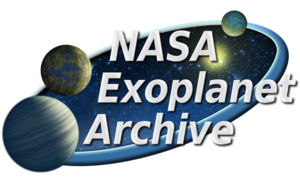 •
10.26133/NEA13
•
Table updated weekly
•
Collection
•
10.26133/NEA13
•
Table updated weekly
•
Collection
NASA Exoplanet Science Institute
The Planetary Systems Composite Table provides, for all confirmed exoplanetary systems, a compilation of planetary and stellar parameters. The table pulls data from the Planetary Systems Table (10.26133/NEA12) and uses multiple references to fill in gaps to produce as "full" of a table as possible. This table is updated in parallel with Planetary Systems Table updates. This table replaced the now-retired Composite Parameters table (10.26133/NEA2).
Please note that the Planetary Systems table is periodically updated. When referring to it, please cite the DOI: 10.26133/NEA12, e.g. in your reference list, and record the date/time of access.
bibtex (built from https://doi2bib.org/bib/10.26133/NEA13 but edited to include a version tag, which works with AASTeX aasjournal.bst style file)
@misc{PSCompPars,
doi = {10.26133/NEA13},
url = {https://catcopy.ipac.caltech.edu/dois/doi.php?id=10.26133/NEA13},
author = {{NASA Exoplanet Archive}},
title = {Planetary Systems Composite Parameters},
publisher = {NExScI-Caltech/IPAC},
version = {Version: YYYY-MM-DD HH:MM},
year = {YYYY}
}
AASTeX (no bibtex)
\bibitem[{{NASA Exoplanet Archive}(YYYY)}]{PSCompPars}
{NASA Exoplanet Archive}. YYYY, Planetary Systems,
Version: YYYY-MM-DD HH:MM, IPAC, \href{https://doi.org/10.26133/NEA13}{doi:10.26133/NEA13}
Recommended text snippet:
We obtain the data set from the NASA Exoplanet Archive \citep{PSCompPars}\footnote{Accessed on YYYY-MM-DD at HH:MM, returning NNNN rows.)}
This dataset or service is made available by the NASA Exoplanet Science Institute at IPAC, which is operated by the California Institute of Technology under contract with the National Aeronautics and Space Administration.




